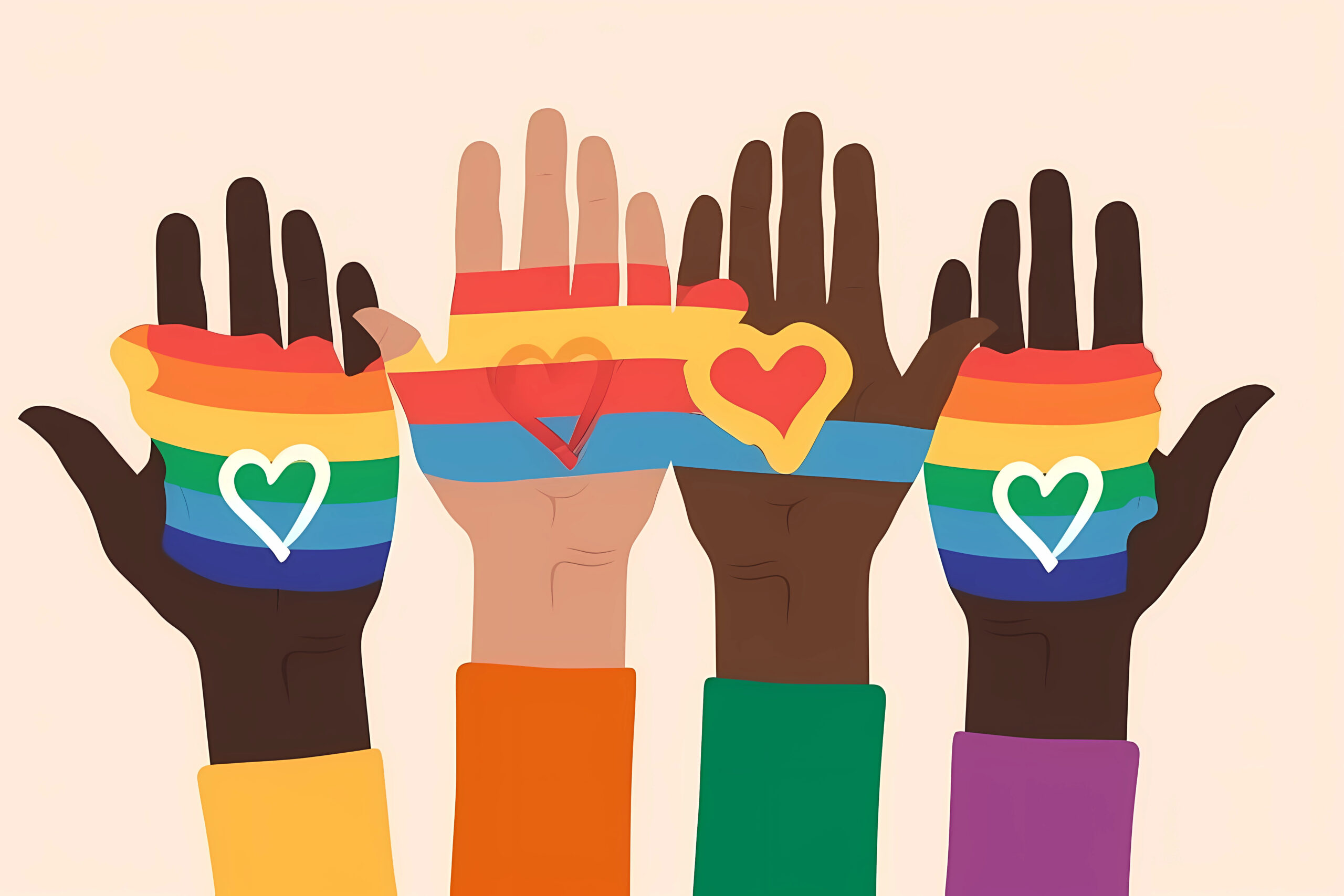Murasaki Shikibu (973 or 978–1014 or 1031) is the penname of a Japanese writer and Imperial lady-in-waiting, best known for penning The Tales of Genji, which is considered the oldest completed novel in the world. Her true identity remains unknown although there have been speculations that she may have been Fujiwara no Kaoriko.
Queen Nanny of the Maroons (1686–1755) remains a bit of a legend, as most knowledge of her comes from oral history. She was born in Ghana and lead the Jamaican Maroons in guerrilla warfare against the British. In 1975 she was declared a national hero. Her troops excelled in long-range communication and camouflage, giving them an advantage over the British in addition to their innovations in guerrilla warfare. Nanny and her Maroons won their freedom and a parcel of land in a time where slavery remained common.
Anne Bonny (1697–1733) and Mary Read (1685–1721) were the most famous lady pirates of the Caribbean. Born in Ireland and England, respectively, Bonny and Read were likely lovers, in addition to Bonny’s marriage to the notorious Jack Calico. All three were captured after stealing a Nassau ship. Calico was executed immediately, Read died in prison, and Bonny’s death remains a mystery.
Mary Ellen Pleasant (1814–1904) was an entrepreneur and abolitionist who owned several businesses and financed the freedom of hundreds of slaves and won several civil rights victories after the civil war. Often passing for white, Pleasant used her light skin tone to her advantage in business, amassing a hefty fortune before declaring herself as a Black woman and using her means to support well known abolitionist John Brown who was also her friend and lover. When he was hanged, a letter of hers was found on him, although no one suspected her. Pleasant came clean before her death, admitting to donating $900,000 in today’s dollars to Brown’s abolitionist pursuits. She additionally worked on the Underground Railroad and sued over streetcar segregation. She has been called the “Mother of Human Rights in California.”
Sarah Winnemucca (1844–1891) wrote the first known memoir by a Native American woman, Life Among the Paiutes: Their Wrongs and Claims (1883). Hailing from the Northern Paiute tribe, Winnemucca, also known as Thocmentony meaning “Shell Flower,” she worked as a teacher and interpreter, and played pivotal roles in wartime. With her command of the English language, she often served as a mediator between her tribe and Anglo-Americans, and advocated for the sovereignty of her people, particularly after their move to the Yakama Reservation, which has been described as a concentration camp. Her writing has been a key tool for modern historians and sociologists. While her social activism was a prominent part of her legacy, she has also been criticized for helping the US military.
Madam CJ Walker (1867–1919) is the first female self-made millionaire in America according to the Guinness Book of World Records. After a childhood spent on a cotton plantation, Walker amassed her fortune through a line of cosmetics and hair products specifically marketed to Black women. As the brand grew, Madam CJ Walker Manufacturing Company trained nearly 20,000 women as sales agents and eventually started selling abroad in Central America and the Caribbean. Walker was also known as an activist and philanthropist, establishing a YMCA in Indianapolis’s Black community, and eventually moved to New York where her activism grew — particularly when she joined the executive committee that organized the Silent Protest Parade which drew a crowd of over 8,000 to protest the East St. Louis race riots. Her daughter, A’Lelia Walker (1885 – 1931) was an openly bisexual patron of the arts in Harlem, who traveled to Paris and spent time with Josephine Baker, who you’ll learn more about later.
Yosano Akiko (1878–1942) wrote controversial tanka poetry and stood strong as an anti-war pacifist and feminist in late Meiji Japan. She completed an estimated 20–50,000 poems and gave birth to 13 children. Her feminist stances deviated from her Japanese contemporaries with regards to financial independence and motherhood. While many Japanese women advocated for government assistance for mothers, Akiko argued that dependence on the government is equivalent to dependence on a man in an essay titled “Women’s Complete Freedom.” She also wrote about the importance of women having identity beyond motherhood. In her later years into the Taisho period, her commentary took a turn to the right in support of war against China and the US.
Marjorie Stoneman Douglas (1890–1998) saved the Florida Everglades. While working as a journalist, she wrote The Everglades: River of Grass (1947) which brought national attention to the importance of the swampland and prevented it from being used for land development. She was also a suffrage advocate and served as a charter member of the ACLU. Douglas had been recognized for her work with the Presidential Medal of Freedom by President Clinton and an award in her name through the National Parks Association. She was also inducted into various halls of fame. She continued her work as a conservationist until her death at 108.
Maria Orosa e Ylagan (1892–1945) developed nutrient–dense food products like Soyalac and Darak in the Philippines, as well as banana ketchup. In addition to her work as a pharmaceutical chemist, Orosa was a humanitarian and war heroine. Her canning techniques and food inventions saved hundreds of lives and aided guerrilla warriors fighting the Japanese during World War II. One of her goals was to help develop food self-sufficiency in the Philippines. She died of shrapnel wounds in Manila after contributing over 700 recipes and to the war effort. She is recognized by the Philippines and the American Red Cross for her invaluable knowledge and innovations.
Chief Funmilayo Ransome-Kuti (1900–1978) played a pivotal role in the Nigerian independence movement as an educator, political campaigner, suffragist, and activist. She was the first female student admitted to the Abeokuta Grammar School and worked promote literacy among lower income women. Ransome-Kuti also established the Abeokuta Woman’s Union while fighting for women’s rights and better government representation. She believed in socialist principals and caught the attention of the British and US who feared her communist connections, although her passport was eventually restored. She became president of the Women’s International League for Peace and Freedom in 1963 and received several honors and awards for her activism—including the honor of membership to the Order of Nigeria and the Lenin Peace Prize.
Josephine Baker (1906–1975) collected intelligence about the Nazis and their collaborators while performing in Paris. She smuggled her information to the British with invisible ink on sheet music. She was also the first Black woman to star in a major motion picture, Siren of the Tropics (1927). Born in the US, she renounced her citizenship and became a French national. She rose to fame with her erotic dances and stage shows, often accompanied by her signature banana costume and her pet cheetah, Chiquita. Yes, a cheetah, that would sometimes escape to the dismay of her musicians. Hemingway called her “the most sensational woman anyone ever saw” and Picasso painted her. She used her celebrity to serve as an “honorable correspondent” during the German occupation of France, for which she received the highest medals and honors. Baker went on to support the Civil Rights Movement during the 1950s. She spoke at the March on Washington and was approached by Coretta Scott King after her husband’s death to replace him as the leader of the movement, which she declined.
Rachel Carson (1907–1964) authored Silent Spring, which resulted in a nationwide ban of certain pesticides, including DDT, in the United States. The book also inspired the grassroots environmental movement that led to the creation of the U.S. Environmental Protection Agency. While her initial research focused on marine biology with the bestsellers The Sea Around Us and Under the Sea Wind, her study and advocacy of environmental conservation played a pivotal role in bringing attention to the damage humanity was causing the planet it inhabits. She was posthumously awarded the Presidential Medal of Freedom by President Jimmy Carter. The surviving letters she exchanged with lifelong partner, Dorothy Freeman, have been published since her death.
Chien-Shiun Wu (1912–1997) made significant contributions to nuclear and particle physics and worked on the Manhattan Project, developing the process for separating uranium. Sometimes known as the “First Lady of Physics,” the Chinese-American experimental physicist is best known for the Wu experiment which figured out something about the conservation of parity which may mean something to you if you studied physics, but I never did. While her role in the discovery was mentioned in the 1957 Nobel Prize in physics acceptance speech, the prize was not awarded to her but rather the physicists who originated the idea of parity nonconservation. Wu was honored in 1978 with the inaugural Wolf Prize.
Ludmilla Pavilchenko (1916–1974) accumulated 309 confirmed kills as a Soviet sniper during World War II. Nicknamed “Lady Death,” she is the most lethal female sniper in recorded history. In 1942, she was injured by a mortar shell and spent the rest of the war training snipers and touring allied nations to secure a second front against Nazi Germany. At an assembly in Chicago, after reporters failed to take her seriously, she famously stated, “Gentlemen, I am 25 years old and I have killed 309 fascist invaders by now. Don’t you think, gentlemen, that you have been hiding behind my back for too long?” She received the Gold Star hero of the Soviet Union, and the Order of Lenin twice.
Wangari Maathai (1940–2011) was the first African woman and environmentalist to receive the Nobel Peace Prize. She studied in the U.S. and eventually earned a Doctorate in Philosophy at the University of Nairobi, becoming the first woman in east and central Africa to do so. She founded the Green Belt Movement in 1977, a non-profit which enabled women to replant devastated areas with trees, and promoted both women’s rights and environmental conservation. She fiercely protested government attempts to privatize public lands and was arrested more than once for it. She was later elected to parliament before winning the Nobel Peace Prize in 2004. She went on to work on waste-reduction programs and served on the Eminent Advisory Board of AWEPA until her death.
Jocelyn Bell Burnell (1943–Present) discovered the first radio pulsars, “one of the most significant scientific achievements of the 20th century.” The astrophysicist hails from Northern Ireland and made her discovery as a postgrad in 1967 which has become an extremely useful tool for astronomers because of the ways they emit electromagnetic radiation. (Or something. Again, not something I have studied.) Her thesis advisor, Anthony Hewish, was awarded the Nobel Prize for the discovery in 1974. While many criticized her omission, she has said herself that the omission was justified because of her status as an undergrad. Regardless, she has gone on to serve as president of the Royal Astronomy Society and was awarded the Special Breakthrough Prize in Fundamental Physics in 2018.
Marsha P Johnson (1945–1992) and Sylvia Rivera (1951–2002) were prominent figures in the fight for gay and trans liberation and co-founders of the radical activist group Street Transvestite Action Revolutionaries (STAR). Orphaned by her father’s abandonment and mother’s suicide, Rivera was living on the streets by age 11 and forced into child prostitution until she was taken in by the local drag community. Johnson, on the other hand, remained closeted within her religious family until she moved to New York and started performing as a drag queen. Both saw their gender as something varied and fluid, not necessarily landing on “womanhood” specifically. During the Stonewall Riots, Johnson threw “the shot glass that was heard around the world,” while Rivera was uptown despite claiming to have been there. Regardless, the two founded STAR, an organization for homeless queer youth. When Johnson’s body was found in the Hudson River, Rivera and Johnson’s other friends insisted that Johnson was not suicidal when police jumped to rule out foul play. Rivera’s activism only strengthened after her friend’s murder, solidifying the transgender movement that continues to this day.
Judith Heumann (1947–Present) became the first wheelchair user to teach in New York City after winning Heumann v. Board of Education of the City of New York in 1970. She has since made immense strides for the disabled community with a range of non-profits, NGOs, and the government. She contributed to the Individuals with Disabilities Education Act and lead the 504 sit-in, the longest federal building sit-in, which convinced Joseph Califano to sign the 504 section of the Rehabilitation Act of 1973—adding significant civil rights protection to citizens with disabilities. She served in both the Clinton and Obama administrations, with the World Bank Group as their first Advisory on Disability and Development, and most recently as a senior Fellow at the Ford Foundation.
Maya Lin (1959–Present) designed the Vietnam Veterans Memorial after submitting her design in a public design competition while still an undergraduate at Yale University. The contest was blind, so the judges were unaware of her race, as the daughter of Chinese immigrants, or her gender. Once revealed, she and her work faced controversy, but ultimately persevered and remains a landmark in Washington DC—ranked 10 in a 2010 poll of America’s Favorite Architecture. She has since created many installations, often with a focus on nature, like her 2010 interactive memorial “What Is Missing?” which laments the loss of biodiversity across the globe. President Barack Obama awarded her with the National Medal of the Arts and the Presidential Medal of Freedom. Lin has four honorary doctorates and is represented by the Pace Gallery.
Claudia Paz y Paz (1966–Present) became the first female Attorney General of Guatemala in 2010. She made unprecedented strides in criminal justice and human rights, including the prosecution of Efrain Ríos Montt for genocide, whose name you might recognize because Rigoberta Menchú advocated for his trial. She aggressively prosecuted organized criminals and human rights violators, making her the first law enforcement official to bring justice to civil rights abusers in Guatemala. In spite of the threats to her life, Paz y Paz sought justice in an unjust world, and actually succeeded. Forbes named her one of the “five most powerful women in the world” in 2012, and she was a leading candidate for the Nobel Peace Prize in 2013. Now, she serves as a member of the Justice Leadership Initiative, and a senior fellow at the Washington Office on Latin America.
Ali Stroker (1987–Present) played Anna in Deaf West’s revival of Spring Awakening and Ado Annie Caries in the 2018 revival on Oklahoma! for which she won the Tony for Best Featured Actress in a Musical. Spring Awakening, which incorporates deaf actors, made her the first Broadway performer to use a wheelchair for mobility on stage, while Oklahoma! made her the first one to win a Tony. Stroker is a co-chair of Women Who Care, supporting cerebral palsy, a founding member of anti-bullying campaign, Be More Heroic, and has traveled to South Africa to partner with ARTS InsideOut—holding theater classes for women and children affected by AIDS. She is openly bisexual, a founding director of ATTENTION Theater, and at 33, has plenty more road ahead to trod.
About the author.
Alessandra is the mentor, educator, and writer behind Boneseed, a private practice devoted to deep self-inquiry through a range of physical, energetic, and mental modalities. She has over 500 hours of yoga, mentorship, and facilitation training and can be found slinging knowledge on her website, newsletter, and @bone.seed.




